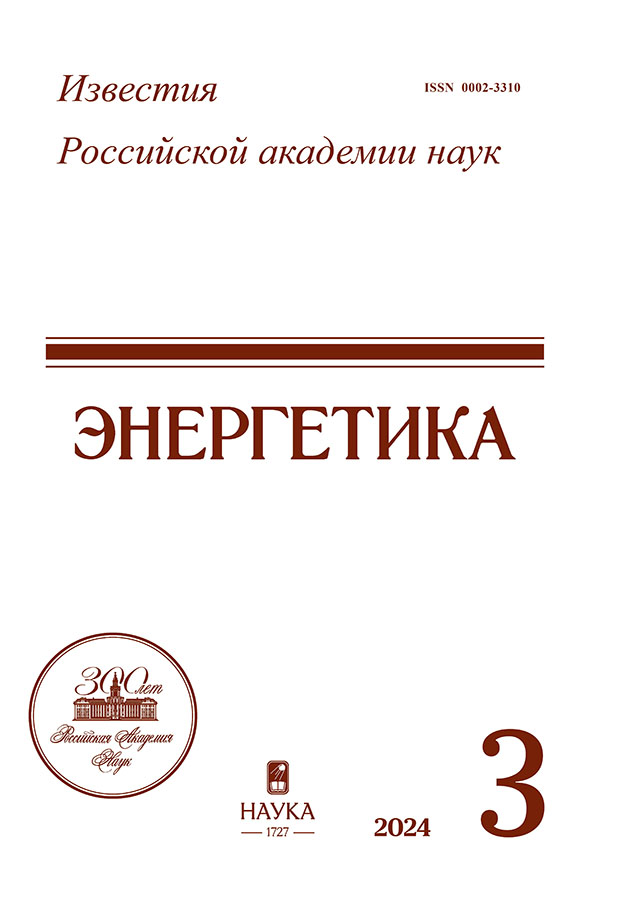Decay heat removal for LMFR under accidents
- Authors: Rachkov V.I.1, Khomyakov Y.S.1, Shvetsov Y.E.1
-
Affiliations:
- JSC “PRORYV”
- Issue: No 3 (2024)
- Pages: 96-109
- Section: Articles
- URL: https://rjonco.com/0002-3310/article/view/660250
- DOI: https://doi.org/10.31857/S0002331024030067
- ID: 660250
Cite item
Abstract
Nuclear reactors of “Proryv” project are positioned as the basis for large scale nuclear energetics with inherent safety, which in particular means “eliminating accident at NPP that require evacuation let alone resettlement of population”, which includes cases of multiple malfunctions. The decay heat removal from the reactor core and prevention of the fuel pins overheating is one of first key questions of safety justification problem. On the base of parametric study using engineering thermal-hydraulics code it is shown how to advance efficiency of decay heat removal through modification of reactor upper plenum design.
Full Text
About the authors
V. I. Rachkov
JSC “PRORYV”
Author for correspondence.
Email: rvi@pnproryv.ru
Russian Federation, Moscow
Yu. S. Khomyakov
JSC “PRORYV”
Email: rvi@pnproryv.ru
Russian Federation, Moscow
Yu. E. Shvetsov
JSC “PRORYV”
Email: rvi@pnproryv.ru
Russian Federation, Moscow
References
- Rachkov V.I., Adamov E.O., Lopatkin A.V., Pershukov V.A., Troyanov V.M. Fast Reactor Development Program in Russia. Int. conf. on Fast Reactors and Related Fuel Cycles: Safe Technologies and Sustainable scenarios, FR-13. 4–7 March 2013, Paris, France.
- Концептуальные положения стратегии развития ядерной энергетики России в перспективе до 2100 г. Адамов Е.О., Джаловян А.В., Лопаткин А.В., Молоканов Н.А., Муравьёв Е.В., Орлов В.В., Калякин С.Г., Рачков В.И., Троянов В.М., Аврорин Е.Н., Иванов В.Б., Алексахин Р.М. – M.: НИКИЭТ, 2012. 61 с.
- Рачков В.И. Разработка технологий закрытого ядерного топливного цикла с быстрыми реакторами для крупномасштабной ядерной энергетики // Известия вузов. Ядерная энергетика. 2013. № 3. С. 5–14.
- Говердовский А.А., Калякин С.Г., Рачков В.И. Альтернативные стратегии развития ядерной энергетики в XXI в. // Теплоэнергетика. 2014. № 5. C. 3–20.
- Shvetsov Iu.E., Ashurko Iu.M., Osipov S.L., Gorbunov V.S. Comparative Analysis of Effectiveness of Various Emergency Core Cooling System Design Options for Sodium Fast Reactors of High Rower. International Conference on FAST REACTORS AND RELATED FUEL CYCLES: Safe Technologies and Sustainable Scenarios. FR13, 4–7 March 2013 Paris, France.
- Адамов Е.О., Рачков В.И., Хомяков Ю.С. Швецов Ю.Е. О возможных технических решениях по аварийному отводу остаточного тепловыделения в быстрых реакторах, охлаждаемых жидким металлом. Изв. РАН. Энергетика. 2019, № 2, с. 1–16.
- GRIF and HYDRON – 3D Codes for Analysis of Thermal and Hydraulics Parameters or Reactors with 1-Phase Incompressible coolant/ Shvetsov Yu.Е., Volkov A.V. / Report 10-th International Meeting of IAHR Working Group on Advanced Nuclear Reactors Thermal Hydraulics. Obninsk, Russia, 2001, July 17–19.
- Кузнецов И.А., Поплавский В.М. Безопасность АЭС с реакторами на быстрых нейтронах. Москва. ИздАТ, 2012 г.
- Kuznetsov I.A., Shvetsov Yu.E. Calculation of thermal-hydraulic parameters of fast neutron with account of inter-fuel-assembly space influence / Book of extended synopses Intern meeting FR09, Kyoto, Japan, Dec. 7–11, 2009. IAEA, 2009. CN-176. Р. 483.
- Ohira H., Xu Y., Bieder U., Velusamy K., Benchmark H. Analyses of Sodium Natural Convection in the Upper Plenum of the MONJU Reactor Vessel. International Conference on FAST REACTORS AND RELATED FUEL CYCLES: Safe Technologies and Sustainable Scenarios. FR13, 4–7 March 2013. Paris, France.
- Tenchine D., Pialla D., Fanning T.H. International benchmark on the natural convection test in Phenix reactor. Nuclear Engineering and Design, Volume 258, May 2013, P. 189–198.
- Аттестационный паспорт программы для электронных вычислительных машин. Программное средство для моделирования теплогидравлических параметров быстрых реакторов с натриевым теплоносителем. Версия 1.0. (GRIF). Рег. № 506 от 14 декабря 2020 г.
Supplementary files



















